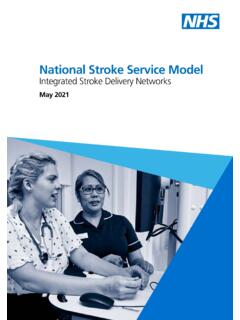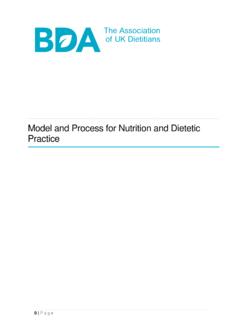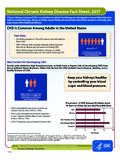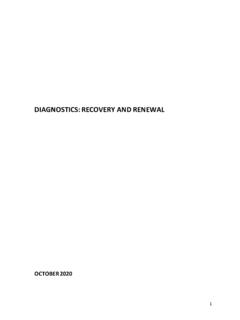Transcription of Best Practices for Cardiovascular Disease Prevention …
1 Best Practices for Cardiovascular Disease Prevention ProgramsA Guide to Effective Health Care System Interventions and Community Programs Linked to Clinical ServicesCenters for Disease Control and PreventionNational Center for Chronic Disease Prevention and Health PromotionDivision for Heart Disease and stroke PreventionAcknowledgmentsThis guide was developed by the Division for Heart Disease and stroke Prevention (DHDSP) in the Centers for Disease Control and Prevention (CDC).DHDSP also gratefully acknowledges the contributions provided by the following external reviewers:American Heart AssociationJill Ceitlin, MPH*Laurie Whitsel, PhD*Association of State and Territorial Health OfficialsElizabeth Romero, MSFeinberg School of Medicine, Northwestern University Darwin Labarthe, MD, MPH, PhD*Georgia State University, School of Public HealthTerry Pechacek, PhDMaine Cardiovascular Health ProgramHolly Richards, MPHM innesota Department of HealthStanton B.
2 Shanedling, PhD, MPHN ational Association of Chronic Disease DirectorsKathleen Foell, MS*MaryCatherine Jones, MPHM iriam Patanian, MPH* national Association of Community Health Centers Margaret Meador, MPHN ational Association of County and City Health OfficialsErica Haller-Stevenson, MPHN evada Division of Public and Behavioral Health Victoria Kolar, EMT-POklahoma State Department of HealthJoyce Lopez, RN, MS, BSN*Jon Lowry, MPH* Denotes participation as an independent peer reviewer in CDC s Influential Scientific Information review CitationCenters for Disease Control and Prevention . Best Practices for Cardiovascular Disease Prevention Programs: A Guide to Effective Health Care System Interventions and Community Programs Linked to Clinical Services. Atlanta, GA: Centers for Disease Control and Prevention , US Dept of Health and Human Services; addresses of nonfederal organizations are provided solely as a service to our readers.
3 Provision of an address does not constitute an endorsement by the Centers for Disease Control and Prevention (CDC) or the federal government, and none should be inferred. CDC is not responsible for the content of other organizations web Summary 4 Introduction 6 Background 7 Domains of Chronic Disease Prevention and Health Promotion 7 Domain 1: Epidemiology and Surveillance 7 Domain 2: Environmental Approaches 7 Domain 3: Health Care System Interventions 7 Domain 4: Community Programs Linked to Clinical Services 7 Focus of the Best Practices Guide for CVD Prevention 8 Health Care System Interventions (Domain 3) 8 Community Programs Linked to Clinical Services (Domain 4) 8 Intended Audience 8 Guide Development 9 Best Practices Framework 9 Other Guiding Frameworks 9 Interpreting the Results: Best Practice Strategy Template 10 Limitations of This Guide 14 Domain 3: Effective Strategies in Health Care System Interventions 16 Promoting Team-Based Care to Improve Hypertension Control 18 Pharmacy.
4 Collaborative Practice Agreements to Enable Collaborative Drug Therapy Management 23 Self-Measured Blood Pressure Monitoring with Clinical Support 28 Self-Management Support and Education 33 Reducing Out-of-Pocket Costs for Medications 38 Implementing Clinical Decision Support Systems 43 Domain 4: Effective Strategies in Community Programs Linked to Clinical Services 48 Integrating Community Health Workers on Clinical Care Teams and in the Community 50 Community Pharmacists and Medication Therapy Management 55 Appendix60 Appendix A. Summary of Effective CVD Prevention Strategies 61 Appendix B. Rapid Synthesis and Translation Process 62 Appendix C. Understanding the Continuum of Evidence of Effectiveness Tool 64 Appendix D. Glossary 704 Best Practices for Cardiovascular Disease Prevention ProgramsExecutive SummaryExecutive SummaryHeart Disease is the leading cause of death in men and women in the United States.
5 Together, heart Disease , stroke , and other vascular diseases claim over 800,000 lives each ,2 An estimated one in every seven US dollars spent on health care goes toward Cardiovascular Disease (CVD), totaling over $300 billion in annual health care costs and lost productivity from premature death each ,4 Several modifiable risk factors for CVD are well known, including hypertension, hyperlipidemia, smoking, being overweight, being inactive, and eating an unhealthy diet. Although treatments for hypertension and hyperlipidemia are very effective and relatively inexpensive, most people with these conditions do not have them under individuals can take steps to reduce their own risks of CVD, public health approaches have the potential to reduce risks among entire populations. Changes to policies, Practices , and health systems that are designed to lower uncontrolled high blood pressure and cholesterol levels among populations can significantly improve access to health care, quality of care, and patient adherence to Centers for Disease Control and Prevention s Division for Heart Disease and stroke Prevention (DHDSP) is guided by its mission to provide public health leadership to improve Cardiovascular health for all, reduce the burden of CVD, and eliminate disparities associated with heart Disease and stroke .
6 DHDSP supports all 50 states and the District of Columbia to work toward achieving this mission, which aligns with the national Center for Chronic Disease Prevention and Health Promotion s (NCCDPHP s) approach to preventing chronic Disease through four key domains5,6: Domain 1: Epidemiology and Surveillance. Domain 2: Environmental Approaches. Domain 3: Health Care System Interventions. Domain 4: Community Programs Linked to Clinical resources are limited and the need to prevent CVD is widespread, decision makers and public health professionals must choose strategies that are effective and sustainable. The four domains provide a framework for these efforts, and scientific evidence can help guide decisions about which strategies to adopt. In this publication, Best Practices for Cardiovascular Disease Prevention Programs: A Guide to Effective Health Care System Interventions and Community Programs Linked to Clinical Services (hereafter called the Best Practices Guide for CVD Prevention ), we describe and summarize scientific evidence behind effective strategies for lowering high blood pressure and cholesterol levels that can be implemented in health care systems (Domain 3) and that involve community programs linked to clinical services (Domain 4).
7 Following the best Practices framework put forth by a CDC work group7 and using a translation tool called the Continuum of Evidence of Effectiveness,8,9 we have reviewed, identified, and summarized the evidence behind strategies that can be considered best Practices for controlling hypertension and target audience for this publication includes state and local health departments, decision makers, public health professionals, and other stakeholders interested in using proven strategies to improve Cardiovascular health. This publication is not intended as comprehensive guidance, but rather a high-level, supportive resource. Our intention is to present brief, easy-to-follow evidence summaries for effective blood pressure and cholesterol control strategies and to highlight available resources and tools useful for implementing these strategies. Because resources are limited and the need to prevent CVD is widespread, decision makers and public health professionals must choose strategies that are effective and sustainable.
8 5 Best Practices for Cardiovascular Disease Prevention ProgramsExecutive SummaryHighlighted strategies include the following: Using a team-based care model. Elevating pharmacy involvement in patient care. Including community health workers on clinical care teams. Activating patient involvement through self-management. Using clinical decision support systems. Reducing out-of-pocket costs for strategies were identified through the recommendations of end users, grantees, evaluators, content subject matter experts, and program specialists, and they are based on the priorities of DHDSP. Each of the selected strategies was vetted by a DHDSP work group, and evidence was reviewed by people with expertise in research methods, program delivery, and the proposed strategies. To be included in the Best Practices Guide for CVD Prevention , strategies had to be supported by multiple high-quality research studies that demonstrated evidence of effectiveness in controlling blood pressure or cholesterol levels.
9 In this publication, we describe the strength of evidence behind each strategy and the reported outcomes related to CVD Prevention . We also highlight the public health and economic impacts of each strategy, including whether it improves health or reduces health addition, we highlight important issues related to the implementation of each strategy, including settings in which the strategies have been implemented, resources available to support implementation, and policy and law-related considerations. Brief synopses, called Stories from the Field, highlight specific locations where the strategies have been successfully implemented. This publication also provides several appendices with additional information. Appendix A provides a summary of the evidence of effectiveness for each strategy. Appendix B explains the Rapid Synthesis and Translation Process, which was one of the methods used to develop this publication.
10 Appendix C provides details about the Continuum of Evidence of Effectiveness, which is an interactive, online tool that was used to assess and rate the strength of evidence for each strategy. Appendix D is a glossary of important terms used in this publication. References1. Xu J, Murphy SL, Kochanek KD, Arias E. Mortality in the United States, 2015. NCHS Data Brief. 2016; Centers for Disease Control and Prevention . Underlying Cause of Death 1999-2015. CDC WONDER Online Database. Atlanta, GA: Centers for Disease Control and Prevention , US Dept of Health and Human Services; 2016. Accessed February 3, Agency for Healthcare Research and Quality. Medical Expenditure Panel Survey website. Table 7: Total Expenses and Per-cent Distribution for Selected Conditions by Type of Service: United States, Average Annual 2012-2013. Accessed May 19, Benjamin EJ, Blaha MJ, Chiuve SE, et al. Heart Disease and stroke statistics 2017 update: a report from the American Heart Association.















